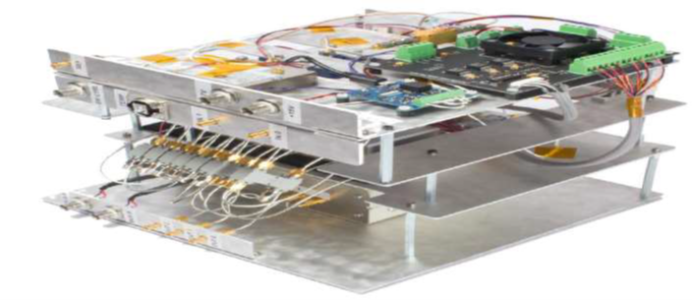Advanced Processing Techniques for Next Generation Multi-channel SARs

The aim of this Activity is to investigate in detail efficient processing techniques for next generation multi-channel SARs, with the twofold objective of exploiting at maximum the availability of multiple channels and targeting multiple applications, including environmental applications such as in-land water and ship monitoring, with the same instrument concept in multi-application missions. Identification, analysis and definition of multi-channel SAR techniques, including MIMO-SARs, as well as instrument and mission concepts and a detailed performance assessment shall be carried out.
Over the last decades, the spaceborne remote sensing community has been focused on the development of imaging radars at RF frequencies such as S-band, L-band, C-band and X-band.
ITU regulations currently permit the use of Ka-band for active spaceborne microwave remote sensing but only few missions are considering applying this frequency band such as the SARAL mission with the ALtiKa instrument (launched 2013).
Studies have been performed which demonstrate the Ka-band is an attractive frequency for imaging missions especially for the realisation of compact interferometric instruments which can be used to provide accurate digital surface models as well as high-resolution maps of areas of interest.
Advanced SAR imaging techniques such as scan-on-receive (SCORE), which use a wide transmit beam but high-gain pencil beams on receive can be applied to achieve reasonable imaging performance at Ka-band in terms of swath width and sensitivity. The use of SCORE in a reflector-feed-array configuration is an attractive solution to limit the number of array elements needed as well as providing a very good ambiguity rejection.
In this context, a new activity with TDE and OHB Systems, Germany) has developed and tested the implementation of a Ka-band SCORE breadboard front-end for SAR to investigate the feasibility of Ka-band SAR and act as a technology roadmap for these kind of instruments,
The activity aimed to demonstrate mixed analogue/ digital beam-forming electronics for a reflector-based scan-on-receive (SCORE) front end.
The KaSCORE breadboard has been successfully implemented and tested, demonstrating for Ka-band SAR applications that the anticipated front-end design and underlying concept is feasible.
Several key aspects have been successfully demonstrated by the breadboard, such as fast-time domain beamforming, real-time digital beamforming of signals up to 500 MHz RF. The breadboard also used the latest generation of digital hardware for spaceborne applications, i.e. the Texas Instruments ADC12DJ3200 and the Xilinx KU060 FPGA.
Space-borne SARs represent a well-established and powerful solution for a wide range of scientific and civil security applications, with their unique capability to meet stringent requirements in terms of coverage, revisit time and resolution.Recently, the development of multi-channel SAR instruments (e.g., TerraSAR-X, RADARSAT-2, COSMO-SkyMed) has opened a new frontier for SARs, adding capabilities that go far beyond those of classic single-channel SARs and enlarging the range of applications that can be targeted by such advanced instruments.For instance, the availability of multiple phase centers could make it possible to address very large swath widths with high resolution and to combine multiple applications such as ATI and high resolution imaging. All these features could be also applied to the Sentinel successor.However, the availability of multiple channels opens two main issues that have to be investigated and solved for exploiting all the potential benefits of this kind of instruments:- Adding multiple receiving and/or transmitting antennas for increasing the instrument performance, leads to a dramatic increase in the instrument complexity; - Multi-channel SARs specifically designed for certain applications (e.g., for applications addressing large swaths and high resolution imaging) could be used also for other applications (e.g., ATI, GMTI, etc.) by properly defining processing schemes and techniques (e.g., grouping antenna phase centres together to reduce the number of phase centres while increasing the SNR, defining toggle mode schemes, defining proper SAR operation mode, etc.) that allow to efficiently address multi-application missions.The Activity shall focus on the definition of instrument concepts and processing techniques, including MIMO, with the aim of exploiting at maximum the availability of multiple Tx/Rx antennas in next generation multi-channel SARs. At the end of the Activity, a clear overview of what can be achieved in terms of range of applications that can be targeted with a single multi-channel instrument in a multi-application mission, promising instrument concepts, instrument performance and identification of eventual limitations shall be provided.
